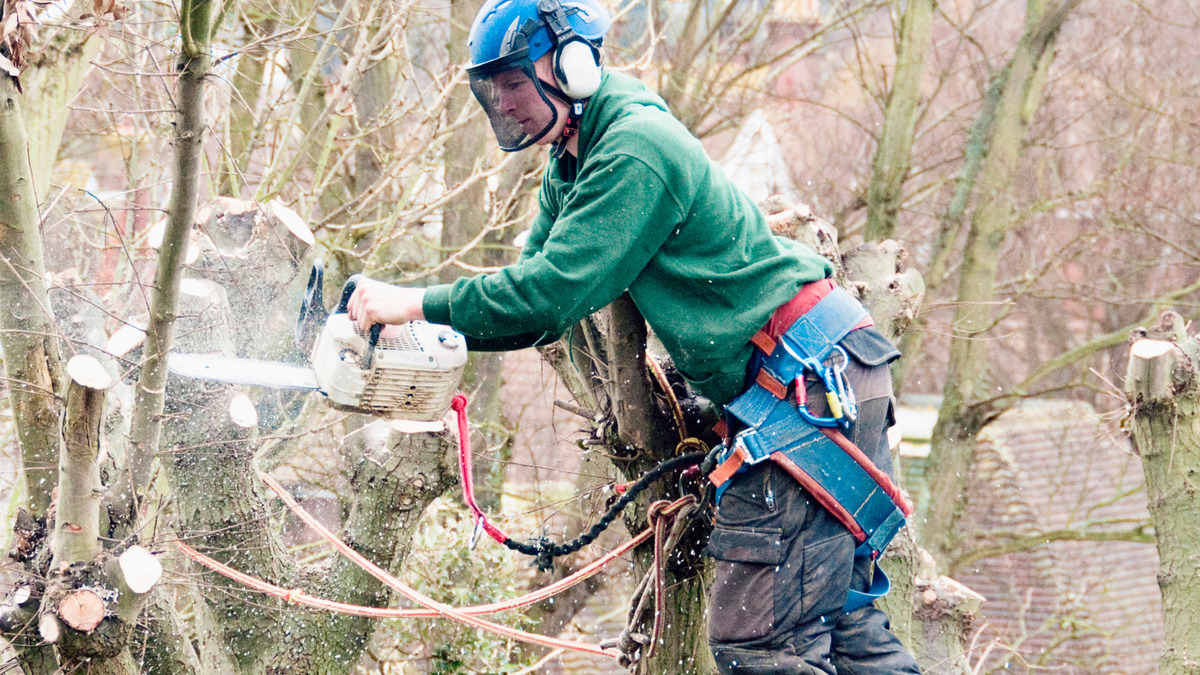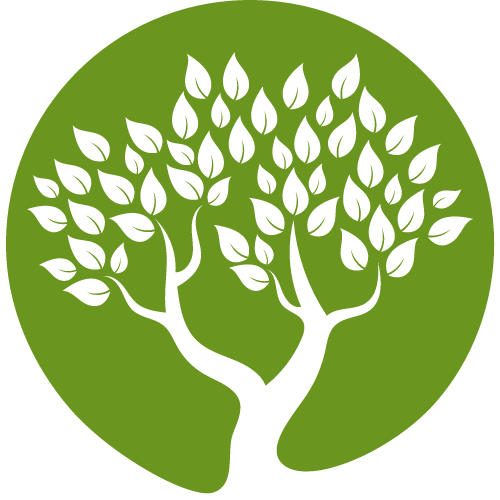Read Our Latest Blogs
Lorem ipsum dolor sit amet, consectetur adipiscing elit. Duis imperdiet nisi ac augue elementum porttitor. Etiam vel facilisis nibh.

Pruning Made Easy | How to Keep Your Trees Healthy with Proper Trimming Techniques
How to Prune Trees Effectively
Welcome to the essential guide on tree pruning—your step-by-step tutorial to mastering this vital skill. As a homeowner, understanding how to properly prune your trees is crucial for maintaining their health, beauty, and safety. Here’s why this guide is a must-read:
Discover the Right Timing: Learn the best seasons for pruning to ensure optimal tree health and robust growth.
Tools of the Trade: We’ll cover the essential tools you need, helping you make clean, precise cuts every time.
Practical Steps: Follow our easy-to-understand, detailed steps to prune correctly, whether you’re a novice or looking to refine your skills.
Real-Life Benefits: From enhancing your property's aesthetic to ensuring safety, the advantages of proper pruning are immense.
Get ready to transform your garden with the skills of a professional tree surgeon! Let’s dive into the art and science of tree pruning.

Identify the Right Time to Prune: Early Spring Considerations
Tree pruning is a crucial aspect of tree maintenance, essential for ensuring the health, aesthetics, and safety of your trees. Here’s a concise guide to understanding when and why you should prune your trees, simplified in a series of points and key statistics, covering the comprehensive aspects of pruning trees, including tips, best practices, and the optimal timing for various types of trees:
Optimal Pruning Time:
Deciduous Trees: Best pruned in late winter to early spring during dormancy. This timing reduces stress on trees, allowing for vigorous growth in the spring.
Flowering Trees: To avoid cutting off flower buds, prune immediately after they finish blooming, typically in late spring or early summer.
Evergreen Trees: Pruning is recommended in April to late August for many conifers and in spring for numerous non-coniferous evergreen trees like holly, bay, and strawberry tree.
Benefits of Pruning:
Health: Removing dead or diseased branches helps prevent the spread of decay and disease within the tree.
Safety: Eliminating weak branches reduces the risk of damage to property or injury to people, especially during severe weather.
Aesthetics: Shaping trees enhances the overall appearance of your landscape, contributing to property value. Studies show that well-maintained landscapes can increase property values by up to 20%.
Pruning for Growth and Health:
Sunlight and Air Circulation: Pruning thins the crown, allowing light and air to better penetrate the tree, which is crucial for reducing disease incidence.
Young Trees: Formative pruning is crucial for young trees to ensure they grow to be healthy and well-structured, focusing on removing crossing branches and cutting off lower branches on the trunk as the tree grows, while avoiding cutting the leader.
Mature Trees: Maintenance pruning helps sustain the tree’s structure, health, and appearance.
Statistics and Studies:
According to the Arbor Day Foundation, regular pruning can reduce storm-related damage by up to 30%, making it a critical preventive measure in areas prone to severe weather.
Research by the U.S. Forest Service found that pruning is one of the most effective ways to increase the lifespan of trees, with properly pruned trees living significantly longer than their unpruned counterparts.
Key Considerations:
Professional Help: For high trees or those near power lines, consider hiring a professional arborist to ensure safety and efficiency.
Proper Tools: Use clean, sharp tools designed for tree pruning. This includes pruning shears for small branches, loppers for medium branches, and a pruning saw for larger branches.
By understanding the strategic importance of pruning and implementing it at the correct time, you can maintain the vitality of your trees and ensure they continue to enhance your property safely and beautifully. Check out some of our various tree pruning services today
Gather the Necessary Tools
Before you begin pruning, it’s important to equip yourself with the right tools to ensure the job is done effectively and safely. Using the proper tools not only makes the task easier but also helps prevent damage to your trees and injury to yourself. Here’s what you’ll need:
Pruning Shears: Ideal for cutting small branches with a diameter of less than 1 inch. Ensure that the shears are sharp and clean to make precise cuts. They are particularly effective for trimming thin branches, ensuring a clean cut that promotes healthy plant tissue.
Loppers: Best suited for slightly larger branches, typically up to 2 inches in diameter. Loppers come with long handles, providing leverage to make cutting easier.
Pruning Saw: Necessary for branches over 2 inches in diameter. Pruning saws come in various sizes and types, including hand saws and pole saws for higher branches. They are also the tool of choice for cutting thicker branches, ensuring a clean cut close to the branch collar.
Pole Pruner: A useful tool for reaching branches up to 8 feet above ground without the need for a ladder.
Safety Gear: Safety should always be a priority. Wear gloves to protect your hands from scratches and goggles to shield your eyes from flying debris. If you are working on larger trees, a helmet and safety harness are advisable.
Additional Tips:
Tool Maintenance: Keep all pruning tools sharp and clean. Dull tools can create jagged cuts that are more susceptible to disease and may harm the tree.
Sanitization: If you’re pruning diseased branches, sanitize your tools between cuts by wiping them with alcohol or a bleach solution. This practice prevents the spread of disease from one part of the tree to another or between different trees.
Equipped with the right tools, you’re ready to make precise cuts that will enhance the health and appearance of your trees.
Inspect the Tree and Plan Your Cuts

Before making any cuts, it’s crucial to thoroughly inspect the tree and plan your approach. This step is essential to ensure that pruning promotes the tree’s health and enhances its natural shape. Here’s how to do it effectively:
Visual Inspection:
Walk around the tree and look at it from various angles. This gives you a better understanding of the tree’s structure and highlights areas that may need attention, especially when dealing with a large tree where special considerations are needed for its size and complexity.
Identify any dead, diseased, damaged, or broken branches. These should be your first priority as they can pose risks to the tree’s health and safety.
Look for branches that cross or rub against each other. These can cause wounds and open pathways for pests and diseases.
Prioritize Your Cuts:
Safety First: Remove branches that pose safety hazards, such as those that are broken, hanging, or dangerously low near walkways and structures.
Health Improvement: After addressing safety concerns, focus on branches that improve the tree’s health, such as those that are diseased or infested. Inspect lower branches for removal to improve clearance under the tree and its overall health, but be cautious not to remove too many at once as this can weaken the tree.
Aesthetic and Structural Enhancement: Lastly, prune to improve the tree’s structure and appearance. This might include thinning the crown to allow for more sunlight and air circulation within the canopy or removing branches that detract from the tree’s overall shape.
Plan the Order of Cuts:
Start with the largest, most necessary cuts first, particularly if they involve removing large branches. This approach helps reduce the weight and minimizes the risk of damage when cutting.
Plan each cut carefully to avoid excessive removal of foliage, which can stress the tree. As a general rule, try not to remove more than 15-20% of the tree’s crown in a single pruning session.
Consider Future Growth:
Anticipate how each cut will affect the growth of the tree. Each species has different growth patterns, and understanding these can help you make more informed decisions.
Make pruning decisions that encourage growth in desired directions, considering factors like prevailing winds, sunlight, and the tree’s surroundings.
By carefully inspecting the tree and planning your cuts, you ensure that each cut is made with purpose and precision, enhancing the tree’s health and visual appeal while maintaining its structural integrity. This thoughtful approach to pruning sets the stage for a healthier, more robust tree in the years to come.
Making the Cuts: Employing Proper Pruning Techniques
Once you’ve planned your approach and identified which branches need pruning, it’s time to start making the cuts. Proper pruning technique is crucial to ensure that each cut promotes healing and maintains the tree’s health. Here’s how to execute pruning cuts correctly:
Cutting Technique:
Angle Your Cuts: Make cuts at a slight angle, about 45 degrees, which helps water run off the cut surface, reducing the risk of disease.
Use the Right Tool: Choose a tool based on the size of the branch. Use shears for small branches, loppers for medium branches, and a saw for large branches.
Clean Cuts: Ensure that each cut is clean and smooth. Jagged cuts can harm the tree and delay healing.
Branch Collar Technique:
Locate the Branch Collar: This is the swelling at the base of the branch where it joins the trunk or another branch. It’s crucial for the tree’s healing process.
Do Not Cut the Collar: Make your cut just outside the branch collar. Cutting into the collar can cause significant harm and prevent the wound from healing properly.
Avoid Leaving Stubs: Leaving too much of a stub can hinder the tree’s ability to heal and encourage decay. Make sure the cut is close enough to the collar without damaging it.
Large Branches:
Use the Three-Cut Method for Large Tree Branches: This technique prevents the bark from tearing when removing large limbs.1. First Cut: Make a notch on the underside of the branch, about a few inches away from the trunk, cutting upwards.
Second Cut: About an inch beyond the first cut, saw through the branch from the top down. This cut removes the branch, preventing it from tearing the bark as it falls.
Final Cut: Cut down the remaining stub, just outside the branch collar. This final cut should be precise to facilitate quick healing.
After Each Cut:
Inspect the Wound: After making a cut, inspect the wound to ensure it’s clean and properly positioned. Clean up any jagged edges. Also, check for bleeding from pruning cuts and avoid bandaging or binding, as this may impede healing.
Clean Your Tools: If you are removing diseased limbs, disinfect your tools after each cut to prevent spreading disease to healthy parts of the tree or other trees.
By following these steps and techniques, you ensure that each cut not only helps shape the tree for aesthetic and safety reasons but also promotes the tree’s health and recovery. Proper pruning is an investment in the tree’s future, enhancing its growth and vitality for many years to come.
Aftercare for the Tree
After pruning, it’s essential to provide appropriate care to ensure the tree recovers well and remains healthy. Effective aftercare helps the tree heal from pruning cuts and continue its growth vigorously. Here's how to properly care for your tree post-pruning:
Clean Up Debris:
Remove all pruning debris from around the tree. This helps prevent any pests or diseases harbored in the cut branches from affecting the tree or other nearby plants.
Proper disposal of the debris, whether by chipping, burning, or municipal green waste collection, is crucial, especially if it includes diseased material.
Watering:
After pruning, ensure the tree is adequately watered, especially if there hasn’t been much rainfall. This helps the tree cope with the stress of pruning and supports new growth.
Water deeply at the base of the tree to encourage deep root growth, which supports the tree's stability and health.
Mulching:
Apply a layer of organic mulch around the base of the tree, extending out to the drip line if possible. The mulch should be a few inches deep but should not touch the tree trunk directly to avoid rot and pest issues.
Mulch helps retain soil moisture, suppresses weeds, and provides nutrients as it decomposes.
Fertilizing:
While it’s generally advisable not to fertilize immediately after pruning, as it can promote too much quick growth, consider applying a balanced slow-release fertilizer in the following season to support recovery and health.
Fertilizer should be applied according to the specific needs of the tree species and local soil conditions.
Monitoring for Pests and Disease:
Keep a close eye on the pruned tree for signs of pests or disease. Early detection is key to managing potential outbreaks that can exploit the tree’s temporary vulnerability post-pruning.
Regular inspections throughout the growing season can help catch issues early before they become serious.
Pruning Paint:
Most modern arboricultural practices recommend against using pruning paint or wound dressings, as they can actually inhibit natural healing. However, there are exceptions, particularly for trees susceptible to certain diseases, where sealing cuts might be advised.
Conclusion
Pruning your trees is much more than just a maintenance task; it's an investment in their long-term health and vitality. By following the steps outlined—from choosing the right time to prune, gathering the necessary tools, inspecting and planning your cuts, making precise cuts, and providing appropriate aftercare—you equip yourself to enhance the safety, aesthetics, and health of your trees.
Remember, every cut made during pruning can influence your tree’s shape and health for years to come. Therefore, it’s essential to approach this task with knowledge and care. Although it might seem daunting at first, with practice and attention to detail, you can achieve professional results and ensure that your trees continue to thrive and beautify your property for many seasons.
If you ever feel uncertain about a particular aspect of pruning, especially when dealing with large, old, or diseased trees, do not hesitate to consult with or hire a professional arborist. Their expertise can provide not only the necessary interventions but also peace of mind.
By maintaining the health of your trees through thoughtful pruning, you contribute to a lush, vibrant, and safe environment. Happy pruning, and may your trees grow stronger and more beautiful with each passing year!
Check out Our Customer Reviews


"Highly recommended"

Brilliant Job – Good value for money, amazing job, I would highly recommend Sheffield Tree Surgeon
"Birch pruning"

Efficient and tidy. They do an amazing job and left the garden clean and tidy afterwards.
"great job"

Would love to recommend these men. They did a great job today quick and efficient. Cleaned up after and very nice to speak to. Would definitely use them again.
We cover Sheffield and surrounding areas with dedicated offices and a green waste timber yard. Use our interactive map to check our availability in your location. We ensure comprehensive coverage and easy accessibility in the areas we serve. Choose a local tree surgeon in Sheffield today.
Sheffield Tree Surgeon
38 Halifax Road, Grenoside, Sheffield, S35 8PB
© 2022 Sheffield Tree Surgeon - All Rights Reserved
We are registered in England & Wales

